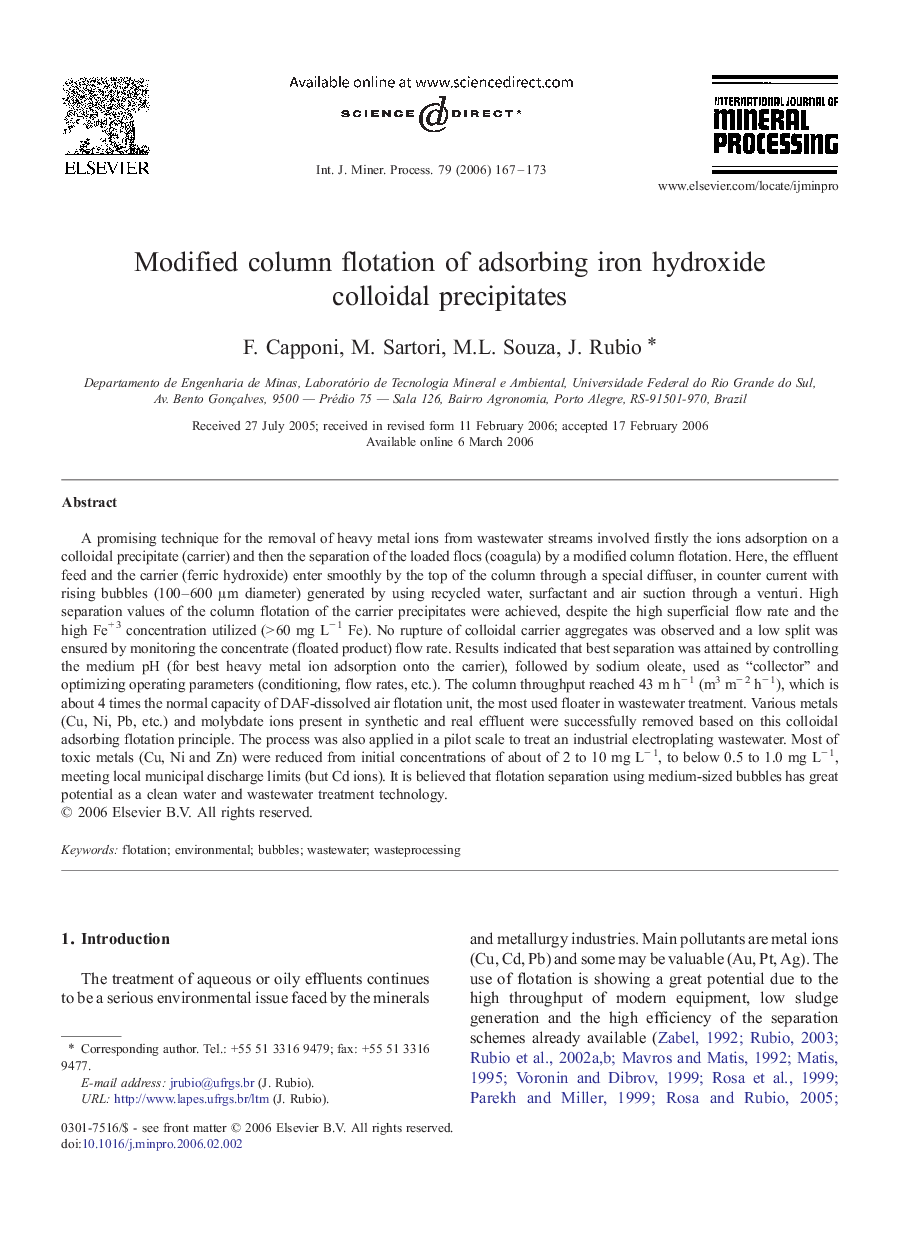| Article ID | Journal | Published Year | Pages | File Type |
|---|---|---|---|---|
| 214630 | International Journal of Mineral Processing | 2006 | 7 Pages |
A promising technique for the removal of heavy metal ions from wastewater streams involved firstly the ions adsorption on a colloidal precipitate (carrier) and then the separation of the loaded flocs (coagula) by a modified column flotation. Here, the effluent feed and the carrier (ferric hydroxide) enter smoothly by the top of the column through a special diffuser, in counter current with rising bubbles (100–600 μm diameter) generated by using recycled water, surfactant and air suction through a venturi. High separation values of the column flotation of the carrier precipitates were achieved, despite the high superficial flow rate and the high Fe+ 3 concentration utilized (> 60 mg L− 1 Fe). No rupture of colloidal carrier aggregates was observed and a low split was ensured by monitoring the concentrate (floated product) flow rate. Results indicated that best separation was attained by controlling the medium pH (for best heavy metal ion adsorption onto the carrier), followed by sodium oleate, used as “collector” and optimizing operating parameters (conditioning, flow rates, etc.). The column throughput reached 43 m h− 1 (m3 m− 2 h− 1), which is about 4 times the normal capacity of DAF-dissolved air flotation unit, the most used floater in wastewater treatment. Various metals (Cu, Ni, Pb, etc.) and molybdate ions present in synthetic and real effluent were successfully removed based on this colloidal adsorbing flotation principle. The process was also applied in a pilot scale to treat an industrial electroplating wastewater. Most of toxic metals (Cu, Ni and Zn) were reduced from initial concentrations of about of 2 to 10 mg L− 1, to below 0.5 to 1.0 mg L− 1, meeting local municipal discharge limits (but Cd ions). It is believed that flotation separation using medium-sized bubbles has great potential as a clean water and wastewater treatment technology.
